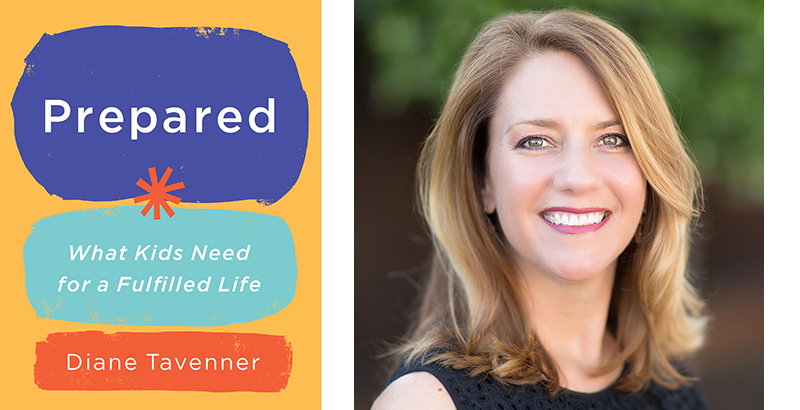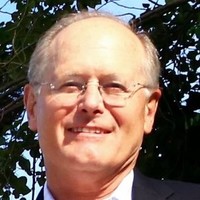Osborne: How Do You Create a School Where ‘Students Are Full Participants in Their Own Learning?’ Read Diane Tavenner’s New Book Prepared

Critics sometimes assume that all charter schools are joyless places with strict discipline and many hours spent preparing for standardized tests. Nothing could be further from the truth.
Many charters are places in which most of us would be happy to enroll our children. If you don’t believe that, you should read Diane Tavenner’s new book, Prepared: What Kids Need for a Fulfilled Life. Tavenner is the founding leader of Summit Public Schools, a group of nine charter schools in California’s Bay Area and two in Washington state. She founded the first Summit school with a group of parents who had grown frustrated that their children were learning to hate school. They wanted schools that engaged their children, that filled them with a lifelong love of learning.
Tavenner had been teaching English at a public high school in Mountain View, California, a working- and middle-class community south of Palo Alto. When she became pregnant, she realized she didn’t want her child to go through that school system.
Even her superintendent confessed his frustration and disillusionment. “The system is broken,” he told her. “It isn’t made to help all kids develop the knowledge and skills they need for the future. If I could do it over, I would start from scratch.”
And that is exactly what Tavenner and her group of founding parents did. To engage the students, they built the high school curriculum around projects, not lectures. “Since our goal is for kids to develop the skills and habits they need to be successful in life, our learning is designed to be focused on the real world every day. Well-designed projects are the most effective learning approach to achieving this goal, so this is how we’ve organized everyday learning. Projects begin with a problem, question or challenge that is relevant to the student and his community and life. They end with the student performing a task that directly addresses the problem, answers the question or meets the challenge.
“A history project might be ‘The Industrial Revolution: The History of a Product,’ wherein the students trace a product from its invention to how it’s used today. A science project might be ‘The Electric House,’ where students learn how engineers apply scientific knowledge to make predictions, create accurate designs, and achieve engineering goals.
“These projects aren’t wedged in, but rather are the day-to-day work of the students. Projects aren’t dessert; they’re the main course.”
“Research has shown that when students learn through projects, they retain what they’ve learned for longer, and they understand it more deeply. The project approach doesn’t compromise test scores, either; on high-stakes tests like the APs, PBL [project-based learning] students perform as well as traditionally taught students — or better. Research also shows PBL students are stronger problem-solvers, and better able to apply their learning to real-life situations. They score higher on skills related to critical thinking, and — this might be the most compelling of all—they care more.”
Summit not only built its curriculum around projects; it scheduled four two-week “expeditions” during the year: deep dives into one subject, often involving real-life experiences such as internships or travel.
The high school was successful, and Summit soon created another, then branched into middle schools. Almost all Summit graduates went on to college. When their first graduating class had been out of high school for five years, Tavenner and her staff surveyed them to see how many had completed a college degree. Most Summit students are from low-income families, and nationally, only 11 percent of such students earn a college degree within six years. At Summit, in that first graduating class of 80 students, the number was 55 percent within four years. But Tavenner and her team were stunned. They had expected higher numbers.
So they interviewed every member of the inaugural class they could find. “We heard time and again from our students who didn’t stay in college that our high expectations for all students had indeed led them to college, but that we had ‘supported’ them too much along the way. In moments when our students were stumbling, or at risk of failing, we would often metaphorically pick them up and carry them over the line. We may have gotten them to the next milestone, but in the process we deprived them of developing the skills they would need to do this for themselves. When they arrived at college and we were no longer there, many of them faltered.”
So they went back to the drawing board. Summit’s leaders and faculty convened a two-way “Innovation Summit” to begin the work of redesign. They knew they had to hold their students’ hands less and put them more in charge of their own learning. To do so, they decided to pilot an approach in which students acquired most of their content knowledge at computers, using an online application called the Summit Learning Platform. The faculty broke the Common Core standards down into hundreds of digestible pieces, then designed a “playlist” for each one, through which students could learn via reading, videos, exercises or other methods.
When a student feels they have mastered a topic, they take a 10-question test. If they answer at least eight questions correctly, they check it off and move on to the next topic. They get to choose the order in which they work, but they meet weekly with their faculty mentor to review their progress. If they need help with something, they go to a “tutoring bar,” where a teacher (or sometimes another student) can help them. And if students are interested in something that is not covered by the Learning Platform, they work on their own or form a learning group with others who share the same interests.
Teachers focus most of their energy on projects and discussion groups; they seldom lecture. If students want to listen to a lecture on something, they watch a video on their playlist. To thrive in this environment, students need to develop what Summit calls “the habits of success”: perseverance, resilience, self-direction and the like. “Teachers doing more couldn’t be our answer,” Tavenner writes. “Instead we had to figure out how to enable kids to do for themselves. It turns out that meant we needed to value developing the habits of success as much as we valued developing academic skills and knowledge.”
In everything the schools do, they work on these habits. Every student is part of a mentor group of 15 to 20, with a mentor teacher, for their entire three years of middle school and four years of high school. Those groups often engage in discussions and activities focused on one or more of the habits of success.
There is much, much more in the book, but the overall portrait that emerges is of a school in which students are full participants in their own learning. The faculty are intentional about teaching students how to learn, so they equip students to succeed in college and beyond.
Prepared is an engaging, well-written book, full of good stories. Tavenner writes as both a school leader and a mother. Some of the most insightful passages have to do with things she learned from her son, including his explanation in fifth grade about why he chose not to do his homework — because he didn’t see the purpose of it. Her last chapter, “A Blueprint for Parents,” is full of advice for parents who want to help their own children, particularly when they are stuck in schools that fail to engage or inspire them. For example, she urges parents to teach their children Summit’s “five behaviors of a self-directed learner”: shifting strategies when they get stuck, seeking challenges by setting stretch goals, exhibiting persistence, responding positively to setbacks and seeking help when it’s appropriate. She also suggests that parents “mentor” rather than direct their children, by giving feedback and guidance, not answers. “This isn’t about you telling them what to do but about them making authentic choices for themselves,” she writes.
Summit has worked hard to share its approach with 380 other public schools — both district-operated and charter — over the past five years. Though most of these schools have continued to use Summit’s approach, parents and students in a few schools have emerged as critics. Given the involvement of Facebook founder Mark Zuckerberg and his wife in funding the expansion, several articles have sensationalized the discontent. But their focus has been entirely on the computer-based learning piece, the Summit Learning Platform. As Tavenner’s book makes clear, project-based learning is the core of Summit’s approach, and students spend far more time on projects than on computers. Those who obsess about too much screen time either misunderstand Summit’s model or have applied only part of it.
If your own children’s schools make you despair, read the book and then find a way to convince a like-minded group of teachers or parents to check out Summit. Perhaps your school will be interested in learning the Summit way — or perhaps it’s time to start your own charter school.
Disclosure: The Bill & Melinda Gates Foundation and Doris & Donald Fisher Fund provide financial support to both Summit Public Schools and The 74. The Chan Zuckerberg Initiative provides financial support to Summit Learning Platform and to The 74.
Get stories like these delivered straight to your inbox. Sign up for The 74 Newsletter

;)
